HR Induction Plan Samples
-
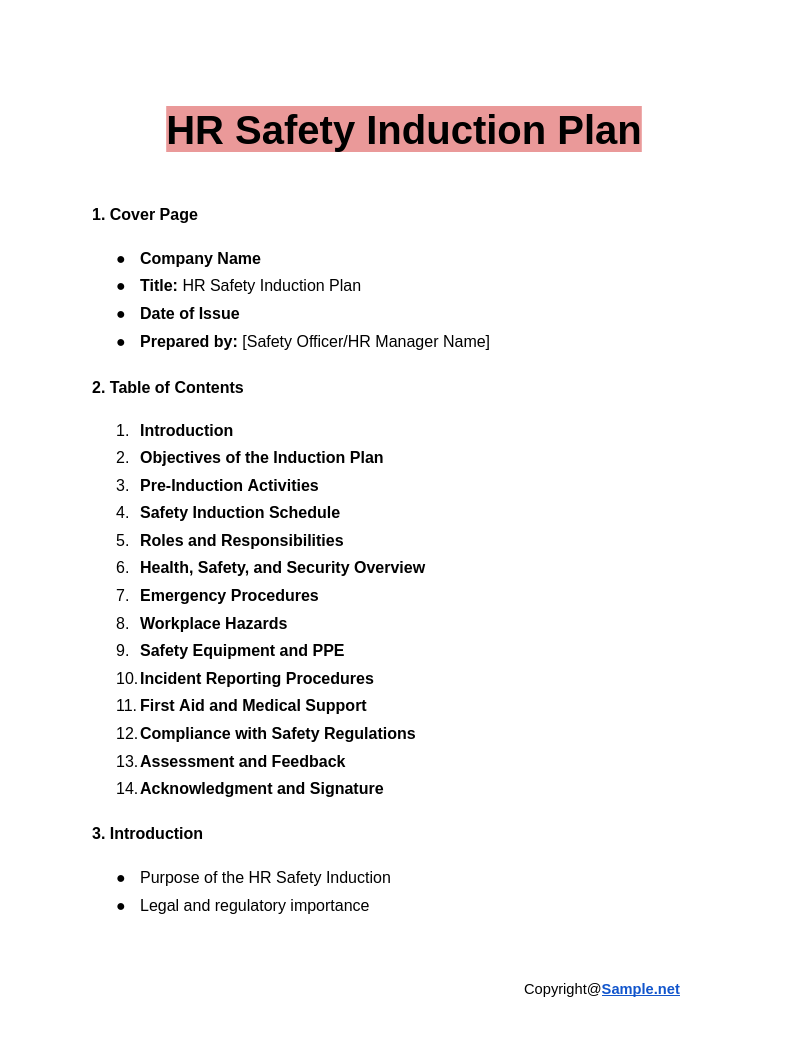
HR Safety Induction Plan
download now -
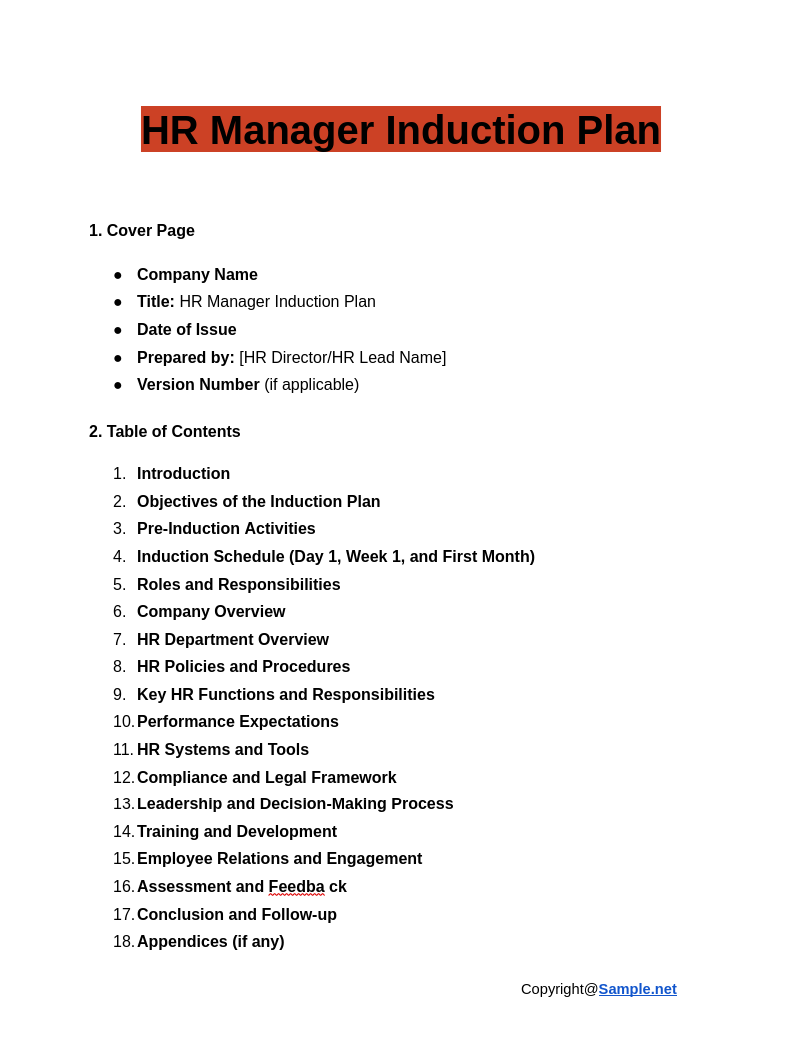
HR Manager Induction Plan
download now -
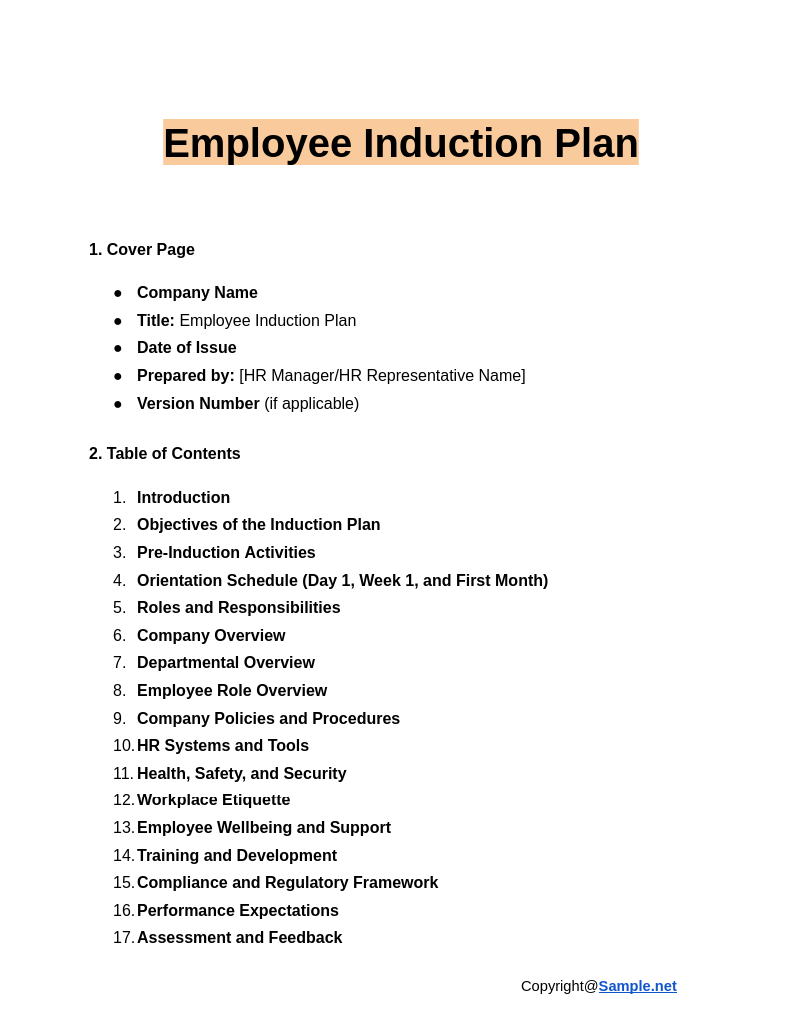
Employee Induction Plan
download now -
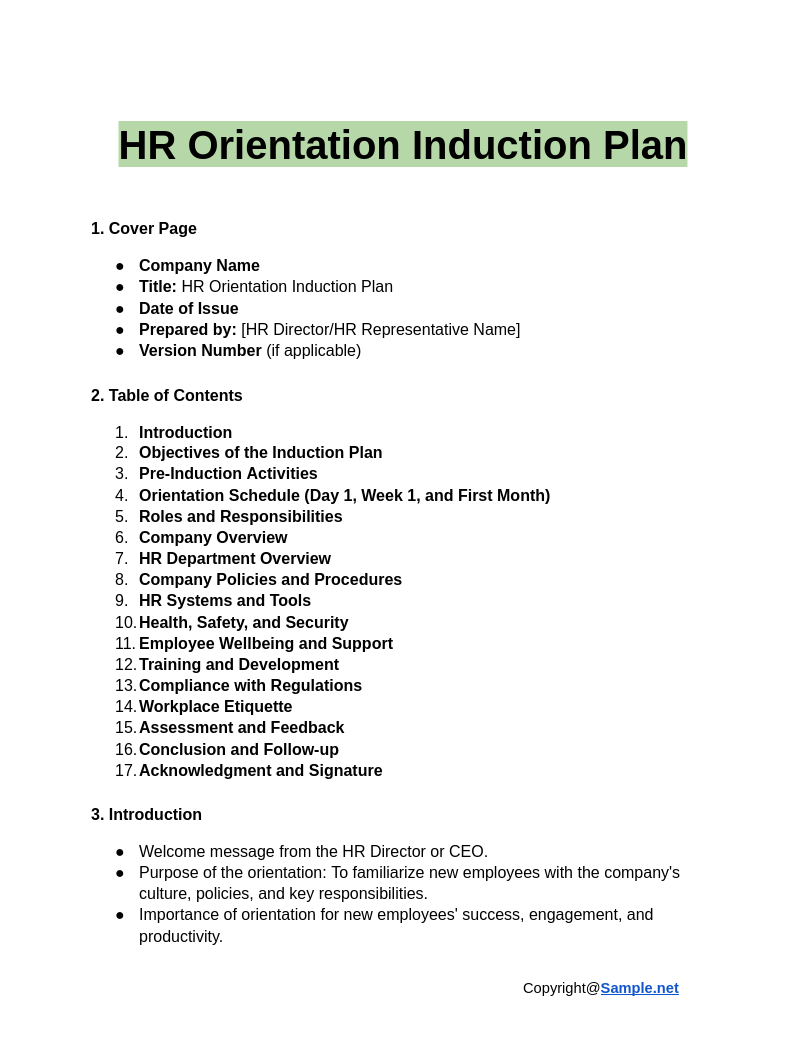
HR Orientation Induction Plan
download now -

HR Induction Plan Template
download now -
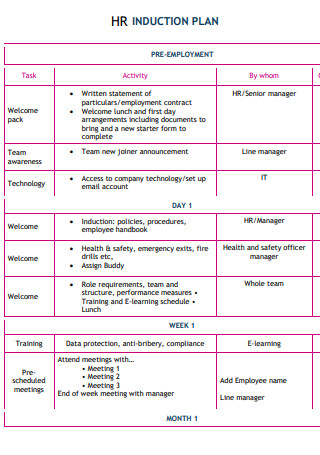
HR Induction Plan
download now -
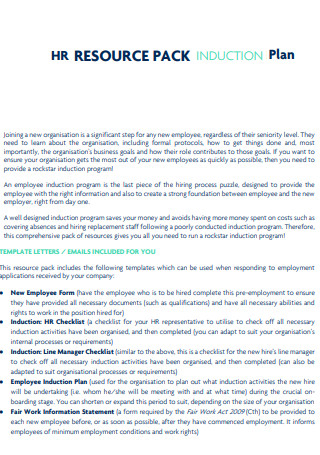
HR Resource Pack Induction Plan
download now -
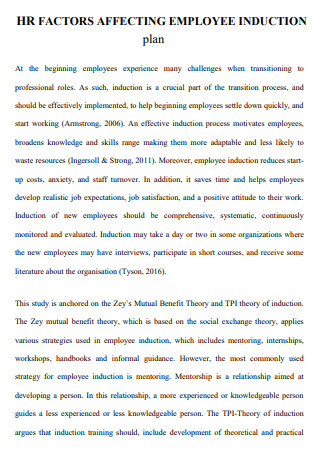
Factors Affecting Employee Induction Plan
download now -

HR Research Staff Induction Plan
download now -
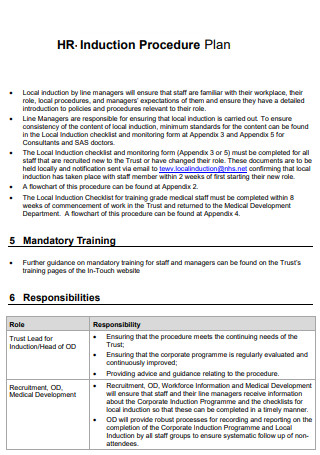
Formal HR Induction Plan
download now -
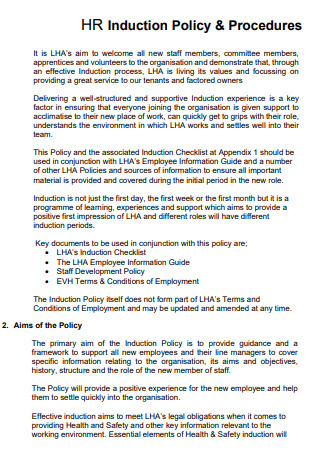
General HR Induction Plan
download now -
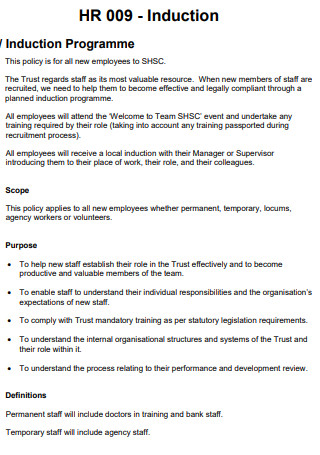
HR Induction Program Plan
download now -
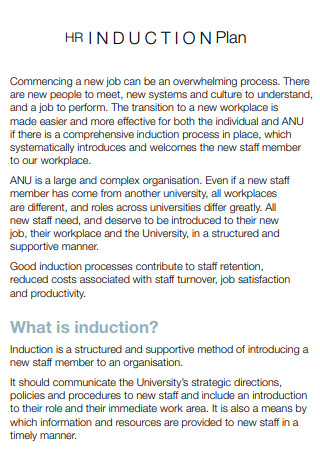
HR Induction Plan Template
download now -
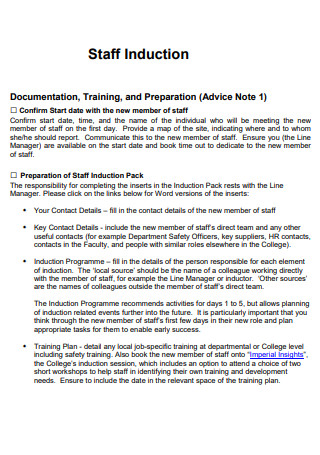
HR Induction Plan to New Staff
download now -
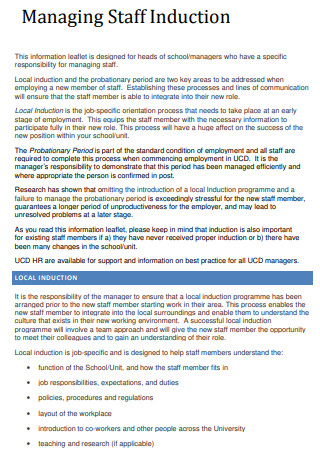
Standard HR Induction Plan
download now -
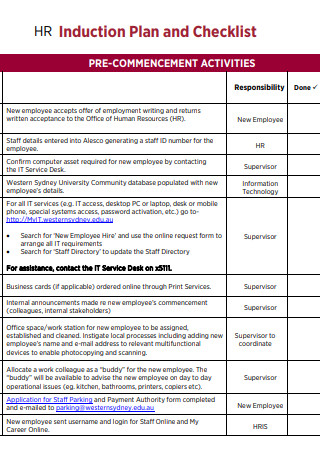
HR Induction Plan And Checklist
download now -

HR Induction Plan for New Employees
download now
FREE HR Induction Plan s to Download
HR Induction Plan Format
HR Induction Plan Samples
an HR Induction Plan?
Purposes of an HR Induction Plan
How to Create an HR Induction Plan
FAQs
Why do businesses conduct inductions?
Is orientation a form of training?
Why is induction training so detrimental?
How long does an HR Induction Plan last?
What activities are included in an HR Induction Plan?
How does an HR Induction Plan improve employee retention?
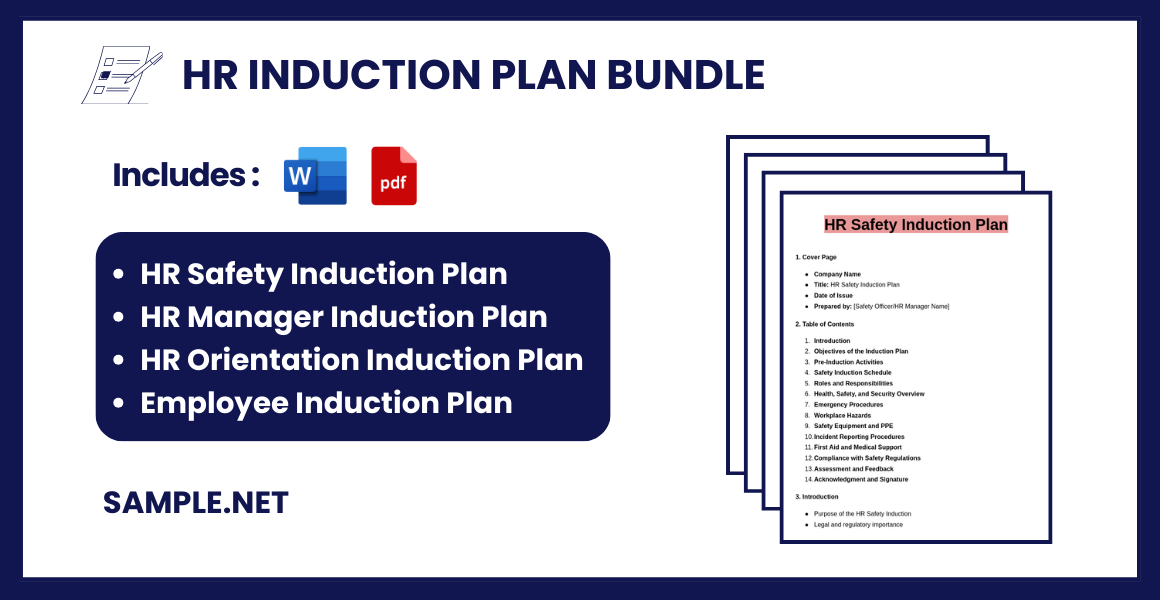
Download HR Induction Plan Bundle
HR Induction Plan Format
1. Cover Page
- Company Name
- Title: HR Induction Plan
- Date of Issue
- Prepared by: [HR Representative Name]
- Version Number (if applicable)
2. Table of Contents
- Introduction
- Objectives of the Induction Plan
- Pre-Induction Activities
- Day 1 Induction Schedule
- Induction Week Schedule
- Roles and Responsibilities
- Company Overview
- Departmental Overview
- Policies and Procedures
- Workplace Etiquette
- Health, Safety, and Security
- Performance Expectations
- Training and Development
- Employee Resources and Support
- Assessment and Feedback
- Conclusion and Follow-up
- Appendices (if any)
- Acknowledgment and Signature
3. Introduction
- Purpose of the Induction Plan
- Importance of Induction for New Hires
- Overview of the Induction Period (e.g., 1 week, 2 weeks, or 30 days)
4. Objectives of the Induction Plan
- Familiarize new employees with company culture, values, and mission
- Introduce organizational policies, procedures, and compliance requirements
- Equip employees with essential knowledge to succeed in their roles
- Enhance engagement, reduce turnover, and improve productivity
5. Pre-Induction Activities
- Document Preparation: Contracts, offer letters, ID cards, and access credentials
- Equipment Setup: Email account, workstation, computer, software, and access control
- Welcome Kit: Employee handbook, company-branded merchandise, and stationary
- Communication: Welcome email to the new hire with induction schedule and joining instructions
- Logistics: Arrange workspace, tools, devices, and necessary IT support
6. Day 1 Induction Schedule
| Time | Activity | Responsible Person |
|---|---|---|
| 9:00 AM – 9:30 AM | Welcome and Introduction | HR Representative |
| 9:30 AM – 10:00 AM | Icebreaker/Team Introduction | Team Lead/Supervisor |
| 10:00 AM – 11:00 AM | Company Overview & Mission | HR Representative |
| 11:00 AM – 12:00 PM | Policies & Procedures | HR Representative |
| 12:00 PM – 1:00 PM | Lunch Break | New Hire |
| 1:00 PM – 2:00 PM | IT Setup & Access | IT Support Team |
| 2:00 PM – 3:00 PM | Workplace Tour | HR Representative |
| 3:00 PM – 4:00 PM | Introduction to Role | Line Manager |
| 4:00 PM – 5:00 PM | Q&A and Wrap-Up | HR Representative |
7. Induction Week Schedule
| Day | Activity | Responsible Person |
|---|---|---|
| Day 2 | Introduction to Team & Role | Team Lead/Supervisor |
| Day 3 | Product/Service Knowledge | Training Team |
| Day 4 | Compliance & Code of Conduct | HR Representative |
| Day 5 | Department-Specific Training | Department Lead |
8. Roles and Responsibilities
- HR Team: Manage the overall induction process and track completion
- Line Manager/Supervisor: Introduce department-specific tasks, tools, and reporting
- IT Team: Provide access to systems, devices, and applications
- New Employee: Actively participate, complete training, and seek clarification when required
9. Company Overview
- History and Milestones
- Vision, Mission, and Core Values
- Organizational Structure
- Products and Services
10. Departmental Overview
- Role of the department in the organization
- Departmental structure and key personnel
- Departmental goals and KPIs
11. Policies and Procedures
- Code of Conduct
- Anti-Discrimination and Harassment Policy
- Data Privacy and Confidentiality Policy
- Leave and Attendance Policies
- Payroll and Benefits Overview
12. Workplace Etiquette
- Dress Code
- Punctuality and Time Management
- Communication Protocols
- Conflict Resolution Procedures
13. Health, Safety, and Security
- Emergency Procedures and Evacuation Routes
- Fire Safety and First Aid
- Use of Safety Equipment (if applicable)
- Security Access and Badge Protocol
14. Performance Expectations
- Key Performance Indicators (KPIs)
- Role-specific Goals and Deliverables
- Performance Review and Feedback Cycles
- Employee Development Plans
15. Training and Development
- On-the-Job Training: Role-specific training with a mentor or team lead
- Workshops and Seminars: Scheduled group training sessions
- E-Learning Modules: Online learning modules for skill enhancement
- Mentorship: Pairing new hires with experienced employees for support
16. Employee Resources and Support
- Employee Handbook: Policies, rules, and procedures
- HR Support: Contact information for HR representatives
- IT Support: Helpdesk and system access guidance
- Employee Assistance Program (EAP): Support for mental health and well-being
17. Assessment and Feedback
- Feedback Form: Collect new hire feedback on the induction process
- HR Review: HR representative conducts a 1:1 review session with new hires
- Probationary Review: Manager review at the end of the probationary period
- Improvements: HR team makes adjustments to the induction process based on feedback
18. Conclusion and Follow-up
- Summary of key takeaways
- List of pending tasks (if any)
- Follow-up meetings for progress review (e.g., 30-day, 60-day, 90-day reviews)
- Contacts for support and assistance
19. Appendices (if any)
- Company Org Chart
- Employee Handbook (optional)
- List of Required Documents (ID, Bank Account, Tax Forms)
- Training Checklist and Calendar
20. Acknowledgment and Signature
Acknowledgment of Induction Completion
I acknowledge that I have participated in the company’s HR induction program and have understood all the policies, procedures, and role expectations as outlined.
Employee Name: [New Hire Name]
Position: [Job Title]
Date of Completion: [Date]
Employee Signature: ____________________________
HR Representative Name: [HR Name]
HR Signature: ________________________________
What is an HR Induction Plan?
An HR Induction Plan is a formal process designed to help new employees acclimate to an organization. It includes orientation sessions, introductions, training, and familiarization with workplace policies, ensuring employees can integrate smoothly into the organization. This plan provides clarity on roles, expectations, and corporate culture, promoting engagement and productivity from day one. By offering support, training, and introductions, companies aim to reduce turnover, boost morale, and create a more efficient onboarding experience. You can also see more on HR Plans.
Purposes of an HR Induction Plan
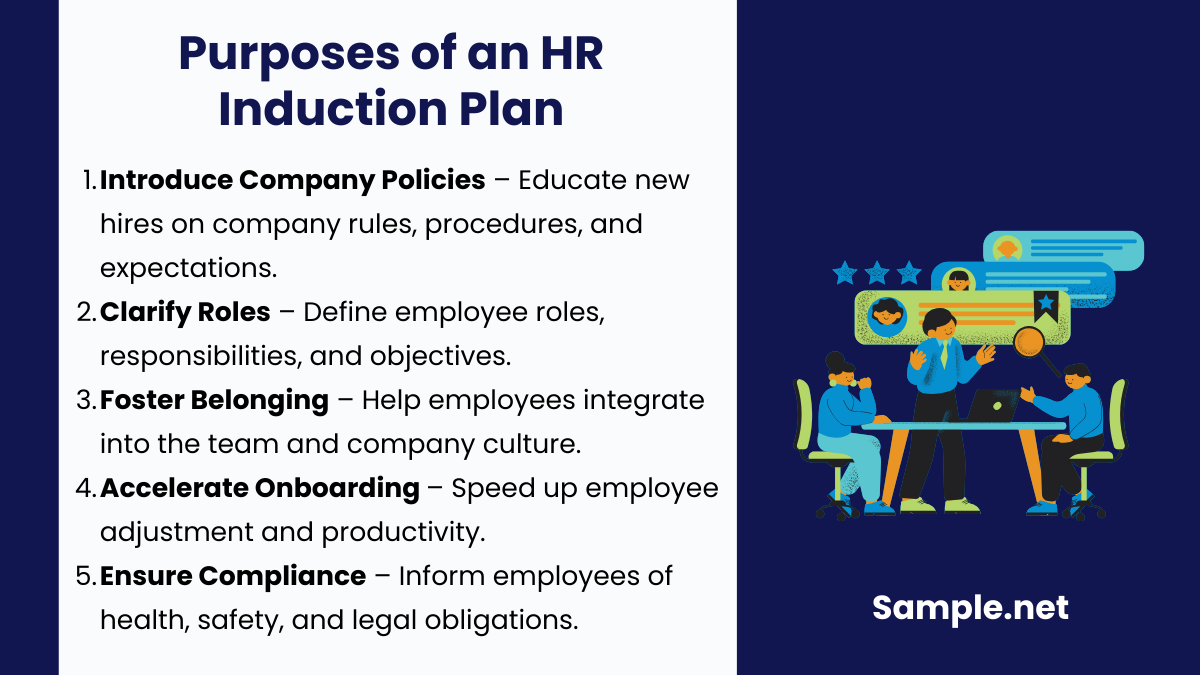
1. Familiarization with Company Policies
An HR induction plan introduces new employees to the company’s policies, procedures, and guidelines. It ensures employees are well-versed in organizational rules and work expectations.
2. Onboarding and Role Clarity
The plan familiarizes new employees with their specific roles, responsibilities, and objectives. It provides clear guidance on what is expected from them in their new position. You can also see more on HR Department Plan.
3. Building a Sense of Belonging
An induction plan helps new hires feel part of the organization. It introduces them to team members, supervisors, and the company’s culture, fostering a sense of belonging and inclusion.
4. Reducing Onboarding Time
By providing essential information and resources from the start, the induction plan speeds up the adjustment period for new employees, allowing them to become productive more quickly.
5. Legal and Compliance Requirements
The plan ensures that employees are informed about workplace health and safety protocols, anti-discrimination policies, and other compliance-related matters. This reduces the risk of legal issues later on. You can also see more on HR Strategic Plan.
How to Create an HR Induction Plan
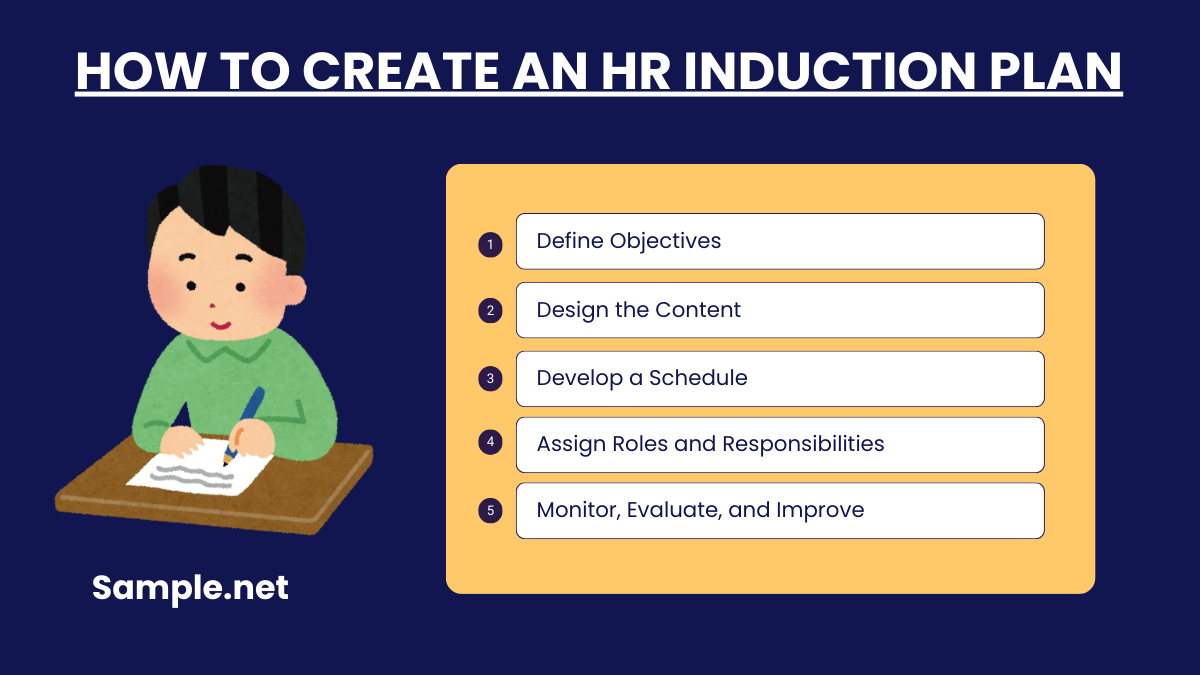
Step 1: Define Objectives
Start by identifying the goals of the induction plan. Decide what knowledge, skills, and experiences new hires should have after the process. Set clear objectives, such as faster employee integration, lower turnover, and higher engagement. Involve managers and HR leaders to align objectives with business goals. You can also see more on HR Strategic Plan.
Step 2: Design the Content
Outline the content to be covered in the induction plan. This includes general company information, HR policies, benefits, department-specific roles, and team introductions. Make the content simple, engaging, and easily digestible. Use a mix of in-person sessions, e-learning, and training modules for variety.
Step 3: Develop a Schedule
Create a timeline for the induction process. Break down activities into daily or weekly schedules, specifying deadlines and key milestones. The schedule should be flexible to accommodate different start dates and employee needs. Ensure the schedule aligns with the onboarding timeline. You can also see more on HR Strategic Action Plan.
Step 4: Assign Roles and Responsibilities
Determine who will be responsible for each part of the induction. HR will handle general sessions, managers will explain department-specific roles, and mentors or buddies will offer peer support. Defining responsibilities avoids delays and ensures everyone stays on track.
Step 5: Monitor, Evaluate, and Improve
After the induction, gather feedback from new employees to identify areas of improvement. Assess if the plan achieved its objectives, such as employee satisfaction and productivity. Make necessary adjustments to keep the program relevant and impactful for future hires.
An HR Induction Plan is essential for ensuring that new employees feel supported, informed, and engaged. It accelerates the onboarding process, promotes cultural alignment, and boosts productivity. By following a structured induction process, companies can reduce turnover, improve employee engagement, and foster long-term loyalty. HR departments must continuously refine their induction plans by gathering feedback and keeping them updated to reflect the company’s evolving needs, ensuring a positive onboarding experience for all new hires. You can also see more on HR Strategy Plan.
FAQs
Why do businesses conduct inductions?
Induction enables employees to integrate into and throughout their new organization successfully. Employers can achieve these objectives by lowering turnover and absenteeism while enhancing employee commitment and job satisfaction.
Is orientation a form of training?
Induction training is an employee’s education and orientation when joining a firm or organization. Induction training is critical because it helps a recruit to become productive quickly. It can help recruits avoid costly mistakes caused by a lack of familiarity with the procedures and techniques of their new jobs. You can also see more on HR Change Management Plan.
Why is induction training so detrimental?
When new employees join an organization, they receive induction training, which typically includes health and safety instruction—particular activity on any job-related duties/skills.
How long does an HR Induction Plan last?
The duration can vary depending on the company. It usually lasts from one week to one month, but some companies have induction programs that span 3-6 months. You can also see more on HR Contingency Plan.
What activities are included in an HR Induction Plan?
Activities include orientation sessions, role-specific training, introductions to teams, learning HR policies, and getting familiar with the company’s culture.
How does an HR Induction Plan improve employee retention?
An HR Induction Plan creates a positive first impression and provides employees with the necessary support and training to succeed. It builds confidence and reduces anxiety, increasing the likelihood that employees will remain with the company for the long term. You can also see more on HR Business Plan.
